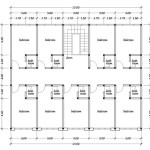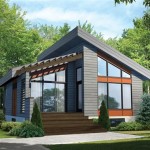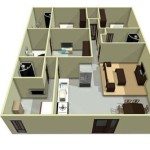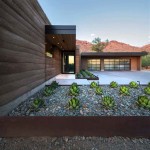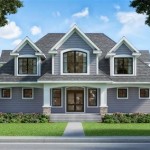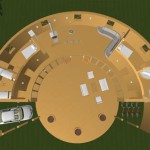Large Gourmet Kitchen House Plans: Designing the Culinary Heart of Your Home
The modern home often centers around the kitchen, and for culinary enthusiasts, a large gourmet kitchen is not just a cooking space, but a central hub for creativity, entertainment, and family connection. Large gourmet kitchen house plans are specifically designed to accommodate the needs of serious cooks, offering ample space, high-end appliances, and thoughtful layouts that prioritize both functionality and aesthetics. These plans go beyond the standard kitchenette, offering a dedicated zone for culinary exploration and social interaction.
Designing a large gourmet kitchen requires careful consideration of various factors, including the overall architectural style of the house, the homeowner’s cooking habits, and the desired aesthetic. It’s a project that necessitates a collaborative approach between architects, interior designers, and the homeowner to ensure that the final result is a space that is both beautiful and practical. This article will explore key considerations and design elements essential for creating successful large gourmet kitchen house plans.
Optimizing Layout and Workflow
The layout of a large gourmet kitchen is crucial to its functionality. The primary goal is to create a workflow that minimizes unnecessary steps and maximizes efficiency. The traditional "kitchen work triangle," connecting the sink, refrigerator, and cooktop, remains a valuable principle, but in larger kitchens, this concept needs to be expanded to account for multiple work zones and specialized appliances.
One popular layout strategy is to incorporate multiple islands. A central island can serve as a preparation area, with a prep sink, chopping block, and ample countertop space. A second island could function as a breakfast bar or a serving area. Integrating these islands into the larger workflow is important, ensuring they don’t obstruct movement but rather enhance it. Consider the distance between islands and other workstations to allow for comfortable movement, especially when multiple people are working in the kitchen.
Another important aspect of layout is zoning. Separate zones for cooking, baking, cleaning, and food preparation can improve efficiency and prevent congestion. A dedicated baking zone might include a mixer lift, a warming drawer, and specialized storage for baking supplies. A separate beverage center with a wine refrigerator and a coffee maker can further enhance the kitchen's functionality.
Walk-in pantries are a frequent component in large gourmet kitchens, providing ample storage for dry goods, appliances, and cookware. Strategically located near the food preparation area, a walk-in pantry can significantly reduce clutter and improve organization. The layout of the pantry itself deserves attention. Consider adjustable shelving, pull-out drawers, and specialized storage solutions for items such as spices and baking sheets.
Beyond the core layout, circulation paths are critical. Ensure that there is enough space for multiple people to move freely without bumping into each other or obstructing access to appliances. Wide walkways (at least 42 inches) are essential, especially in areas with high traffic, such as the space between the island and the cooktop. Thoughtful placement of doorways and entry points is also vital to prevent bottlenecks and ensure a smooth flow of traffic.
Careful consideration of natural light is essential. Large windows and skylights can flood the kitchen with natural light, creating a bright and welcoming atmosphere. However, it's important to manage glare and heat gain, particularly in areas where food preparation takes place. Strategically placed window coverings can help mitigate these issues. Furthermore, optimize artificial lighting, employing a combination of ambient, task, and accent lighting to create a well-lit and visually appealing space. Under-cabinet lighting is particularly useful for illuminating countertops, while pendant lights can add a touch of elegance to the island.
Selecting High-End Appliances and Fixtures
A gourmet kitchen demands high-quality appliances that offer superior performance and durability. Professional-grade ranges, convection ovens, and commercial-grade refrigerators are common features. Consider the specific needs and cooking style of the homeowner when selecting appliances. For example, a serious baker will appreciate a double oven with precise temperature control, while someone who frequently cooks large meals may need a high-powered range with multiple burners. Ventilation is also crucial. A powerful range hood with adequate capture and containment capabilities is essential for removing smoke, odors, and grease from the kitchen.
Beyond the major appliances, attention should be paid to smaller details such as the faucet and sink. A high-arc faucet with a pull-down sprayer is a practical choice for washing large pots and pans. Consider installing a second prep sink in the island for added convenience. The choice of sink material is also important. Stainless steel is a durable and easy-to-clean option, while other materials like copper or granite can add a touch of elegance.
Countertop materials play a significant role in both the aesthetics and functionality of the kitchen. Granite, quartz, and marble are popular choices due to their durability and beauty. However, each material has its own unique characteristics. Granite is highly resistant to heat and scratches, while quartz is non-porous and requires less maintenance. Marble is a classic choice, but it is more susceptible to staining and etching. When selecting countertop materials, consider the homeowner's lifestyle and maintenance preferences.
Cabinetry is another crucial element in a gourmet kitchen. High-quality cabinets provide ample storage and contribute significantly to the overall aesthetic. Choose cabinets that are both functional and stylish. Consider features such as pull-out shelves, soft-close hinges, and custom storage solutions. The finish of the cabinets should complement the overall design scheme. Options range from classic painted finishes to natural wood tones.
Flooring is another area where durability and aesthetics meet. Hardwood is a popular choice for its warmth and beauty, but it requires regular maintenance. Tile is a more durable option that is resistant to water and stains. Consider the overall style of the house when selecting flooring material. A modern kitchen might benefit from sleek concrete floors, while a traditional kitchen might be better suited to hardwood or tile.
Integrating Design Aesthetics and Functionality
A large gourmet kitchen should be both functional and visually appealing. The design should reflect the homeowner's personal style and complement the overall aesthetic of the house. Consider the color palette, materials, and lighting to create a cohesive and inviting space.
The style of the kitchen should be consistent with the overall architectural style of the house. A modern house might benefit from a minimalist kitchen with clean lines and sleek appliances. A traditional house might be better suited to a more ornate kitchen with classic details. When choosing design elements, consider the homeowner's personal preferences and lifestyle.
Color plays a significant role in the overall aesthetic of the kitchen. Neutral colors such as white, gray, and beige create a timeless and sophisticated look. Bold colors can be used as accents to add personality and visual interest. Consider the amount of natural light in the kitchen when selecting colors. Darker colors can make a small kitchen feel even smaller, while lighter colors can brighten up a dark space.
Lighting is essential for creating a welcoming and functional kitchen. A combination of ambient, task, and accent lighting is necessary to illuminate the space effectively. Ambient lighting provides overall illumination, while task lighting illuminates work areas such as countertops and cooktops. Accent lighting highlights architectural features and adds visual interest. Under-cabinet lighting is particularly useful for illuminating countertops and creating a warm and inviting atmosphere.
Finally, consider incorporating decorative elements such as artwork, plants, and accessories to personalize the space. These elements can add a touch of personality and create a more inviting and comfortable atmosphere. Choose accessories that complement the overall design scheme and reflect the homeowner's personal style. A well-designed gourmet kitchen is not just a cooking space, but a reflection of the homeowner's personality and lifestyle.
In conclusion, designing large gourmet kitchen house plans is a complex undertaking that requires careful consideration of various factors. By focusing on optimizing layout, selecting high-end appliances, and integrating design aesthetics with functionality, it's possible to create a culinary masterpiece that will be enjoyed for years to come.

Gourmet Kitchen 60534nd Architectural Designs House Plans

Chef Ready Gourmet Kitchen Plans Dfd House Blog

Gourmet Kitchen Open To Large Living Spaces 23136jd Architectural Designs House Plans

Gourmet Kitchen Open To Large Living Spaces 23136jd Architectural Designs House Plans

High End Gourmet Kitchen Design Luxe Homes Build Birmingham Michigan

What Is A Gourmet Kitchen Case Design Remodeling Md Dc Nova

Country House Plan With Gourmet Kitchen And Storage Space 3760

Gourmet Kitchens

23 Stunning Gourmet Kitchen Design Ideas Traditional

Gourmet Kitchen Design Ideas

